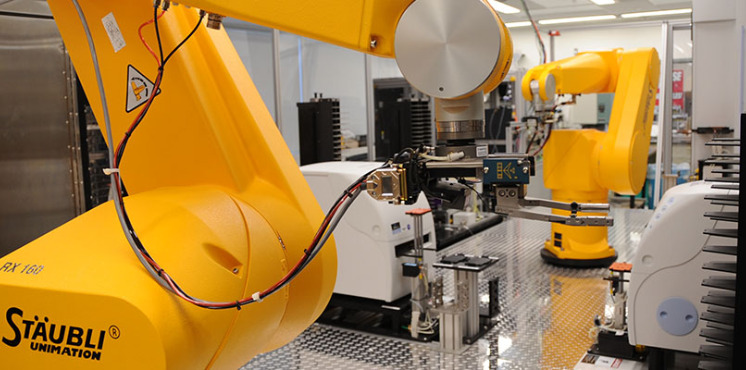Tox21 Projects
Tox21 projects are made possible by new technologies and new discoveries in gene expression analysis, culture of human tissue stem cells and integrated pathway information.
About Tox21 Projects
Contact
Cross-Partner Projects
To accommodate the expanded strategic direction and focus of the Tox21 collaboration, a central functional group called the cross-partner project was created in 2018.
BioPlanet
Through this project, Tox21 researchers are working to annotate pathways by source, species, biological function/process, disease/toxicity relevance and availability of probing assays using data from the PubChem and ToxCast databases. The BioPlanet database currently hosts approximately 1,700 unique human pathways that have been thoroughly curated. A public web browser allows easy pathway visualization and analysis. Continued development of this resource will include compound activity data, sequence data, gene/protein expression data and pathway data from non-human species, in addition to organizing assays according to pathways/diseases/toxicity end points. This integrated platform will push forward systematic analysis and modeling of toxicity responses.
Assays
Tox21 researchers work on a variety of different assays:
- Phenotypic readouts
- Cytotoxicity assays (i.e., cell viability [measures ATP], kinetic measurement of cytotoxicity and viability in cells)
- Apoptosis assays (i.e., caspase assays [measures activity of caspase 3/7*, 8, 9])
- Membrane integrity assays (i.e., LDH and protease release)
- Mitochondrial toxicity assays (i.e., mitochondrial membrane potential assay*)
- Gene toxicity assays
- Differential cytotoxicity (DNA damage repair gene–deficient cell lines, DT40 and mouse cell lines)
- ATADS (ELG1)*
- Micronucleus assay
- Phospholipidosis assays
- Genetic variation (more than 1,000 HapMap lines)
- Pathway-specific toxicological mechanisms
- Pathway assays using reporters (e.g., luciferase, β-lactamase) measuring hypoxia, ER stress, NF-κB*, p53*, ARE/Nrf2*, HSE, CREB, AP-1, STAT, NFAT, HIF-1α*, ESRE*, real time cytotoxicity and viability*
- Developmental pathway assays (retinol signaling*, Hedgehog/Gli* and SBE/SMAD*)
- Target-specific toxicological mechanisms
- Nuclear receptor assays, including AR*, AhR*, ERα/β*, FXR*, GR*, LXR, PPARα*, PPARδ*, PPARγ*, PR*, PXR*, RXR*, TRβ*, VDR*, RORγ, CAR*, ERR*
- G-protein-coupled receptor/calcium signaling assays, including TRHR*, TSHR*, GnRHR*, CHRM1*, HTR2A*, and KISS1R
- G-protein-coupled receptor/cAMP signaling assays, including DRD2*, ADRB2*, and ADRB1*
- Enzyme activity assays, including AChE*
- hERG potassium channel assay*
- Cytokine assays including IL-8 and TNF-α
- Cytochrome P450 assay including CYP 1A2*, CYP 2C9*, CYP 2C19*, CYP 2D6*, CYP 3A4*, and CYP26A1*
* Assays screened against the Tox21 10K library
Neuronal Toxicity
Tox21 researchers are developing cellular models and methods to assess neurodegenerative and neurodevelopmental toxicities. Stem cell–derived, LUHMES-preserved and 3-D cultured neuronal models are included. Screening methods include neurite growth measurements and toxicant-chemical interaction “Toxmatrix” screening.
High Throughput Genomics
NCATS is developing methodologies to improve the throughput of tracking RNA changes of cellular models treated with various environmental, pharmaceutical and food-based compounds in the hopes of identifying signatures that affects our health.
Tox21 Strategic Plan

On March 8, 2018, leaders of the Toxicology in the 21st Century (Tox21) program published a new strategic and operational plan to address new research challenges in chemical testing.
Advancing Research on Mitochondrial Damage



